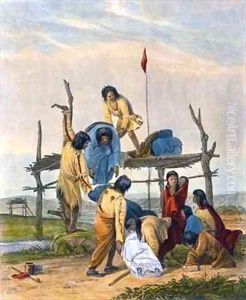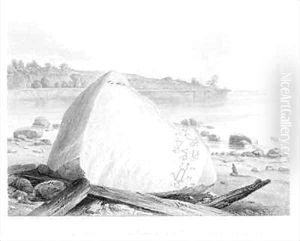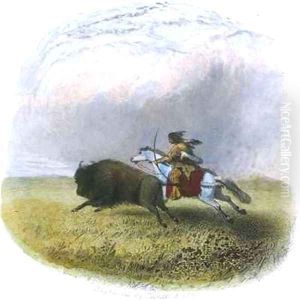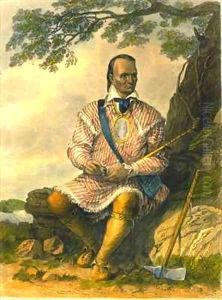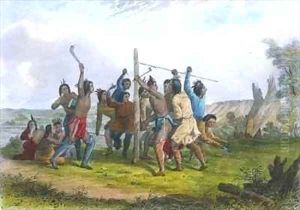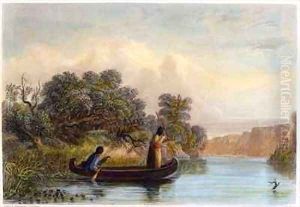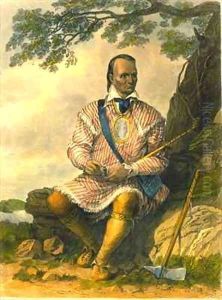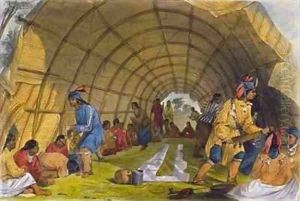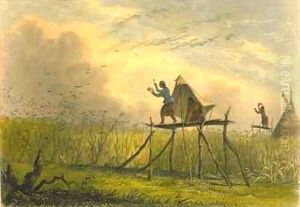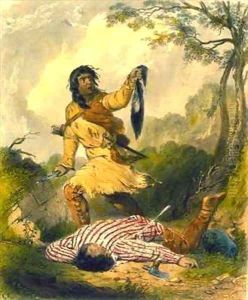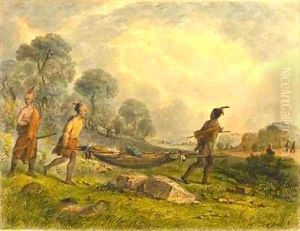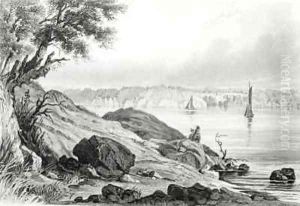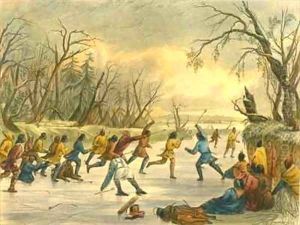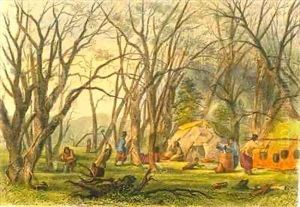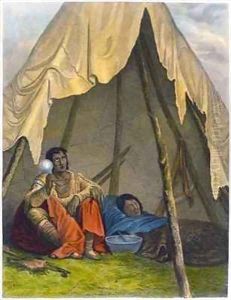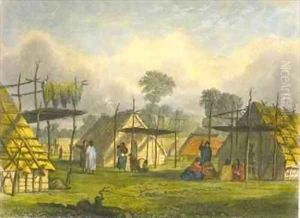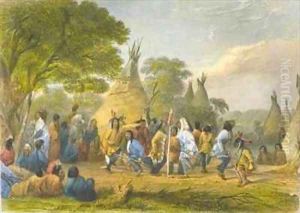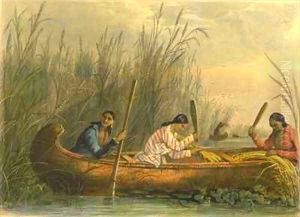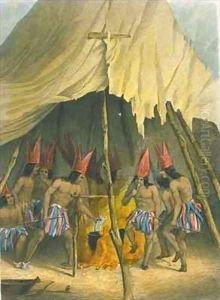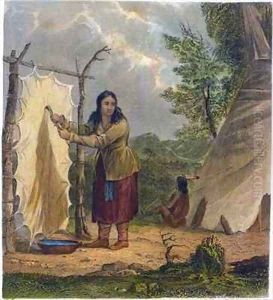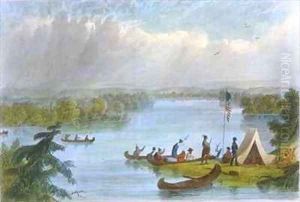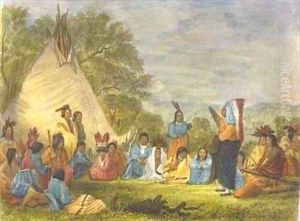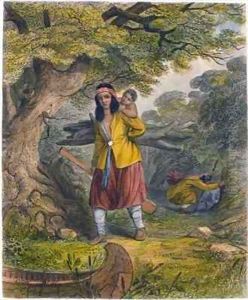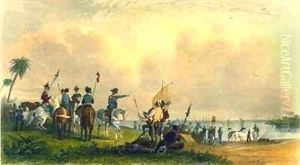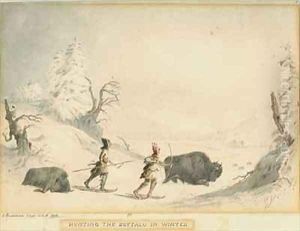Eastman, Captain Seth Paintings
Captain Seth Eastman was a U.S. Army officer and a talented artist known for his detailed illustrations and paintings of Native American peoples, their life, and the landscapes of the American frontier. Born on January 24, 1808, in Brunswick, Maine, Eastman pursued a military career and graduated from the United States Military Academy at West Point in 1829. He was assigned to frontier posts where he interacted with Native American communities, which became the central subjects of his art.
Eastman's artistic work was a combination of his military duties and personal interests. He often used his sketches to document the Native American cultures, which he encountered during his military service. His style was characterized by a focus on realism and precise detail, aiming to accurately portray the life and environment of the Native American tribes he observed. Eastman's works are considered important historical records, as they provide a visual account of a way of life that was rapidly changing and often misunderstood during his time.
Throughout his career, Eastman was stationed at various forts, including Fort Snelling in Minnesota, where he produced some of his most significant works. He married a woman of mixed Dakota and white ancestry, Wakaninajinwin (Stands Sacred), which further deepened his connection to and understanding of Native American cultures. His second wife, Mary Henderson Eastman, collaborated with him on a book entitled 'Dacotah, or Life and Legends of the Sioux Around Fort Snelling.'
In the 1850s, Eastman was commissioned by Congress to produce a series of illustrations for Henry Rowe Schoolcraft's comprehensive study on Native American tribes, 'Historical and Statistical Information Respecting the History, Condition, and Prospects of the Indian Tribes of the United States.' This work further solidified his reputation as a leading artist and ethnographer of Native American life.
Captain Seth Eastman retired from the military in 1863 but continued to paint and draw until his death on August 31, 1875, in Washington, D.C. Today, his works are held in numerous collections and are esteemed not only for their artistic quality but also for their ethnographic significance, providing insights into the lives of Native American peoples in the 19th century.
